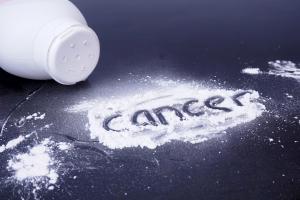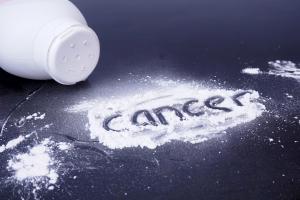IARC changed its 2006 classification of talc from being a "possible" cause of ovarian cancer (Group 2B) to a more serious classification of being a "p

IARC changed its 2006 classification of talc from being a “possible” cause of ovarian cancer (Group 2B) to a more serious classification of being a “probable” cause of ovarian cancer.
Attorneys condemn J&J’s evasion tactics, citing decades of negligence in acknowledging cancer risks associated with talc products.
PENSACOLA, FL, U.S.A., July 9, 2024 /EINPresswire.com/ — In light of the recent evaluation by the International Agency for Research on Cancer (IARC), a prominent international authority on carcinogenic substances, Levin Papantonio, a leading advocate for victims of talc-related ovarian cancer, addresses the significant implications of the IARC’s latest findings. These findings have profound ramifications for ongoing litigation and public awareness concerning the potential health risks associated with talc use.
Talc: A Common Mineral Under Scrutiny
Talc, a naturally occurring mineral, is widely utilized in various industries, including cosmetics, pharmaceuticals, and food processing. Its ubiquitous presence in consumer products has raised concerns about potential health risks, particularly its association with ovarian cancer.
The IARC’s 2024 re-evaluation of talc, which it had previously reviewed in 2006, underscores these concerns. In its announcement on Friday, IARC upgraded its 2006 classification of talc as a “possible” ovarian carcinogen” (Group 2B) to the more alarming classification as a “probable” ovarian carcinogen. (Group 2A).
Even more concerning is that IARC noted that asbestos has been documented in talcum powder because industry testing methods for assessing talc-based powders (such as Johnson’s Baby Powder) “have often been insufficiently sensitive to rule out asbestos contamination.” Where talcum powder contains asbestos, IARC has made it clear there is “convincing” evidence that talc can cause ovarian cancer (Group 1).
Key Findings from the IARC Evaluation
The IARC Working Group, comprising 29 international experts, conducted a comprehensive review of existing scientific literature. Their findings highlighted several critical points:
Human Evidence: The classification of talc as Group 2A is based on limited but consistent evidence linking talc use to an increased incidence of ovarian cancer in humans, particularly among women who reported using talc-based body powder in the perineal region.
Occupational Exposure: Increased rates of ovarian cancer were observed among women occupationally exposed to talc, notably in the pulp and paper industry.
Animal Studies: Experimental studies on animals demonstrated that talc exposure resulted in an increase in malignant neoplasms in female rats and a combination of benign and malignant neoplasms in male rats. These findings contribute to the sufficient evidence needed to classify talc as a probable carcinogen.
Mechanistic Evidence: Talc exhibits key characteristics of carcinogens, including the induction of chronic inflammation and alterations in cell proliferation and death. These mechanistic insights provide a robust foundation for the classification of talc as a probable carcinogen, independent of asbestos.
Implications for Ongoing Litigation
Levin Papantonio has been at the forefront of representing victims of talc-related ovarian cancer. The IARC’s findings bolster the scientific basis for the firm’s talc cancer lawsuits, providing compelling evidence that supports the claims of those who have suffered due to prolonged talc exposure.
“Our clients have suffered devastating losses, and the IARC’s findings are a crucial validation of what we’ve been arguing all along,” said Chris Tisi, attorney with Levin Papantonio and a member of the Plaintiffs’ Steering Committee in the national talc multidistrict litigation (MDL 2738, In Re: Johnson & Johnson Talcum Powder Products Marketing, Sales Practices, and Products Liability Litigation).
“IARC warned that talc probably causes ovarian cancer, even if it has no asbestos at all,” Tisi said. “Either way, this body, made up of internationally recognized scientists, concluded what we have always known—talc-based Johnson’s Baby Powder causes deadly cancers and should have been off the market decades ago.
“Johnson & Johnson has known about the cancer risks linked to talc since the 1960s, yet they chose profits over people’s lives,” Tisi added.
Public Awareness and Consumer Safety
The IARC’s findings serve as a crucial reminder of the importance of informed consumer choices and the need for stringent regulatory oversight. Levin Papantonio urges consumers to exercise caution when using talc-based products and to seek alternatives when possible.
Plaintiffs’ Firms Continue to Oppose J&J Bankruptcy Plan
Several of the nation’s most prominent law firms, renowned for their dedicated and successful representation of individuals harmed by dangerous products, have announced their unified opposition to Johnson & Johnson’s plan to pursue a prepackaged bankruptcy to resolve claims brought by ovarian cancer victims. The company has made two previous attempts at bankruptcy filings (despite its market value exceeding $350 billion). Both efforts were rejected by federal courts in New Jersey, where Johnson & Johnson is headquartered.
Opposing attorneys argue that the plan sets a dangerous precedent, potentially enabling other large, financially solvent corporations to evade mass tort litigation.
The talc cancer MDL consists of more than 50,000 lawsuits filed on behalf of ovarian cancer victims.
Attorney Mike Papantonio, senior partner at Levin Papantonio, underscored the profound significance of this litigation.
“It’s time Johnson & Johnson is held accountable for the grave harm it’s caused,” Papantonio said. “This is not just a fight for justice, but a fight to ensure no more lives are lost to this multi-billion-dollar corporation’s reckless disregard for human health.”
Sara Stephens
Levin Papantonio
+1 281-744-6560
email us here
Visit us on social media:
Facebook
X
LinkedIn
Instagram
YouTube
TikTok
![]()
